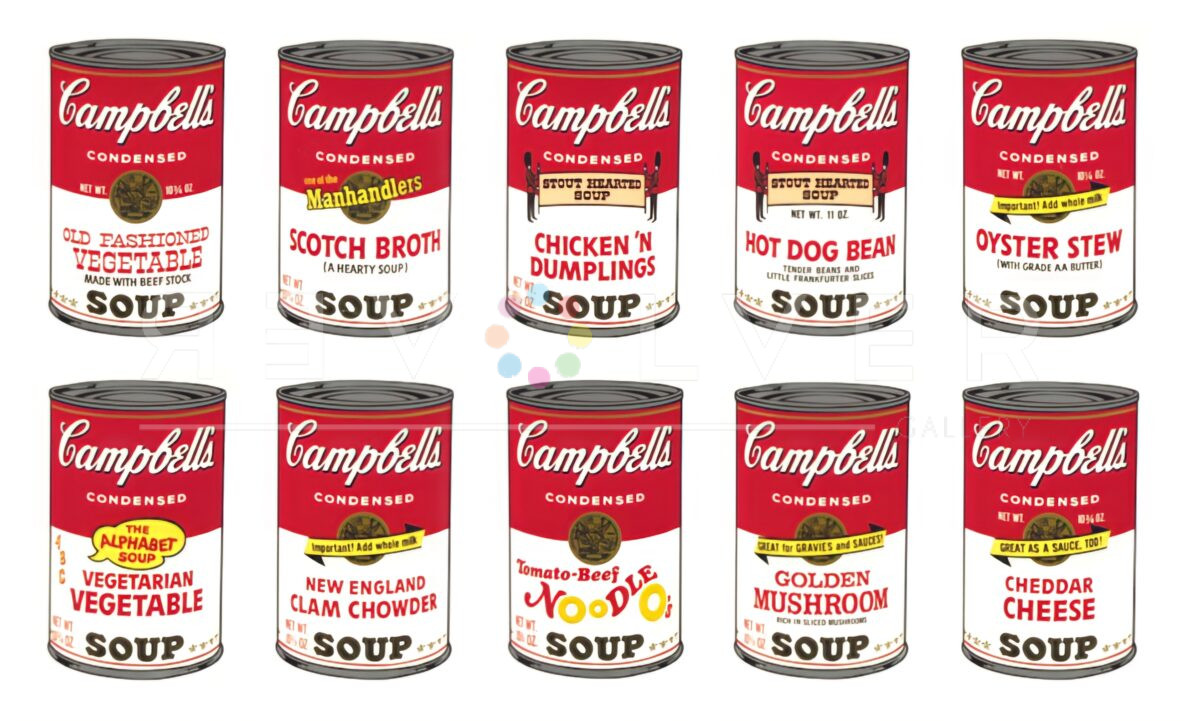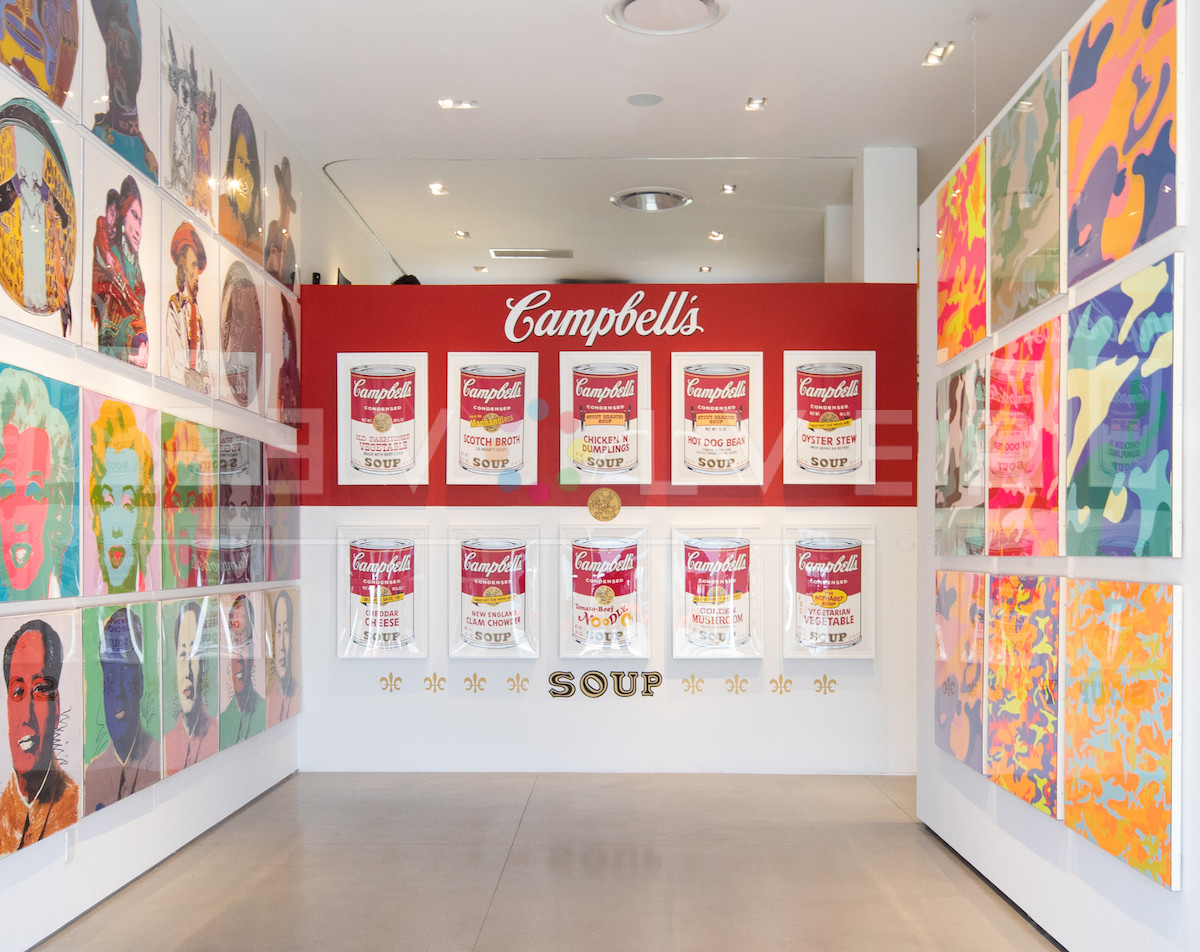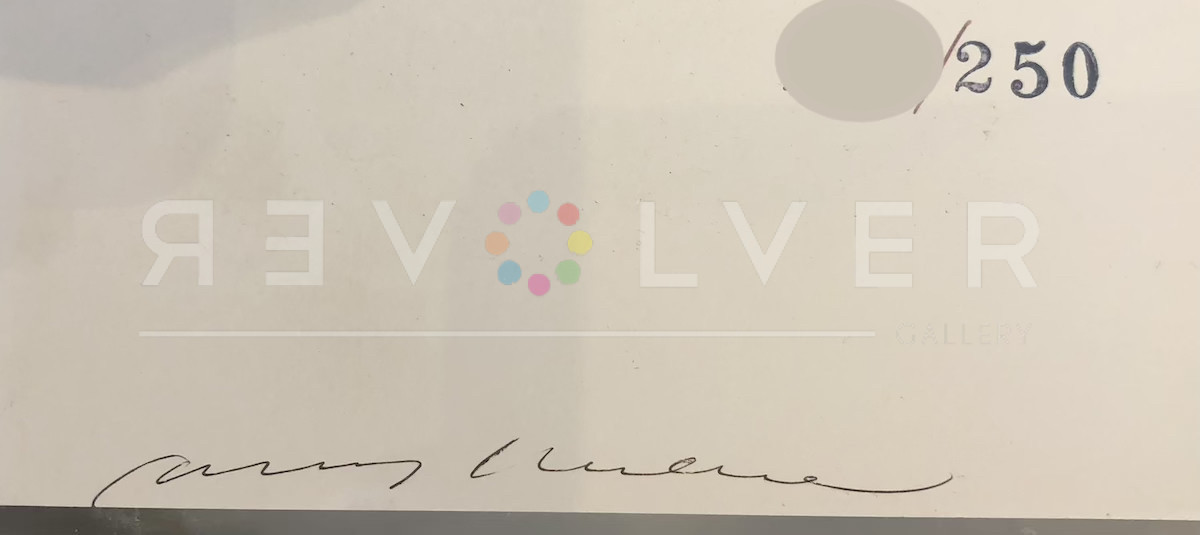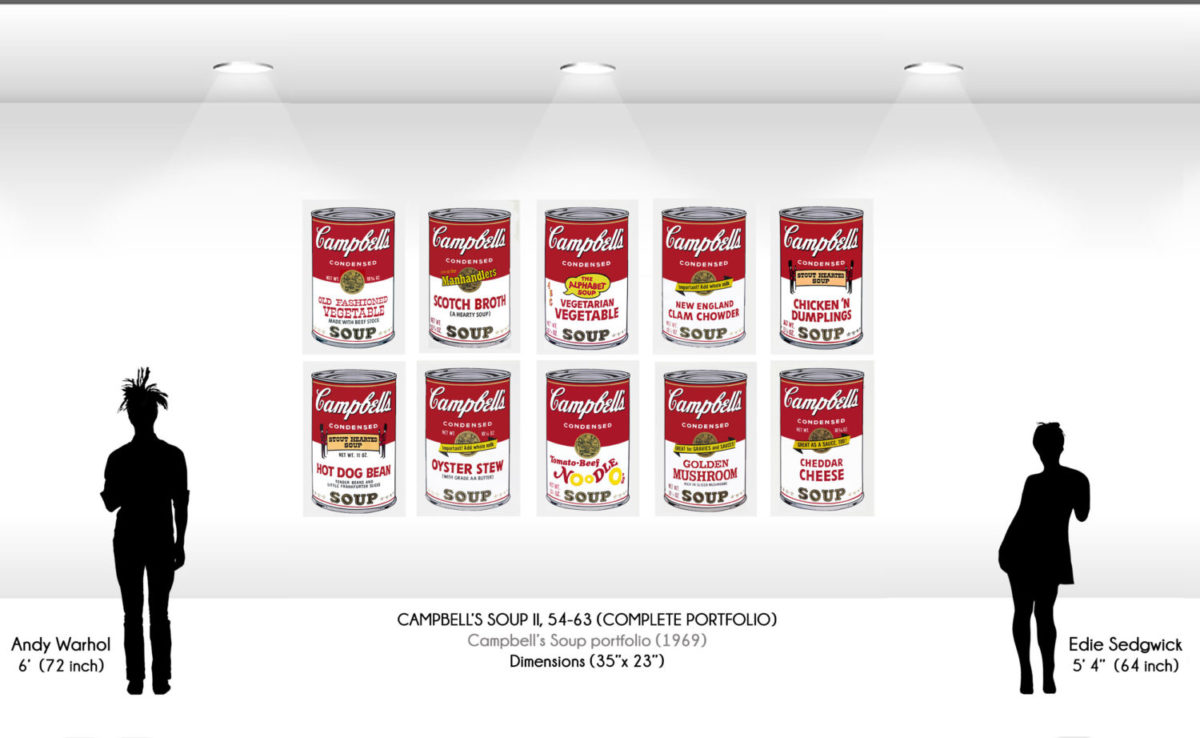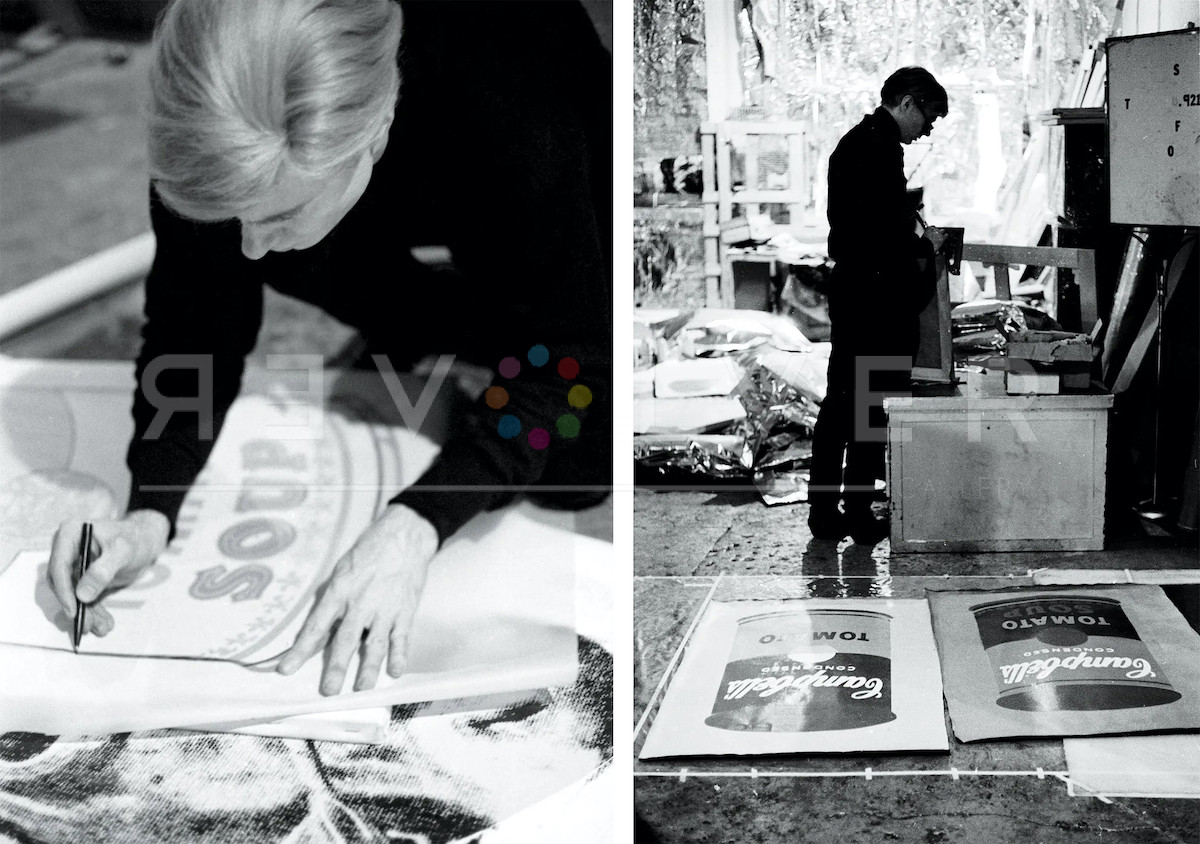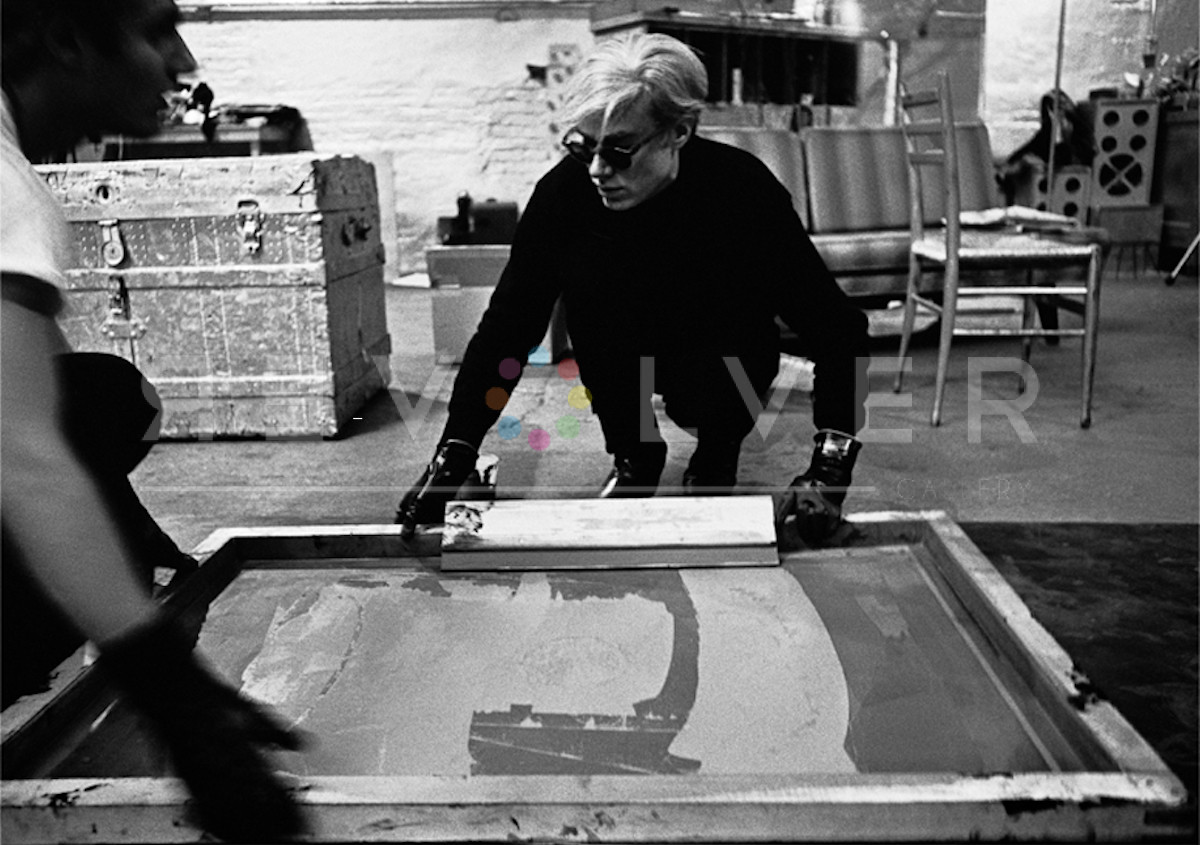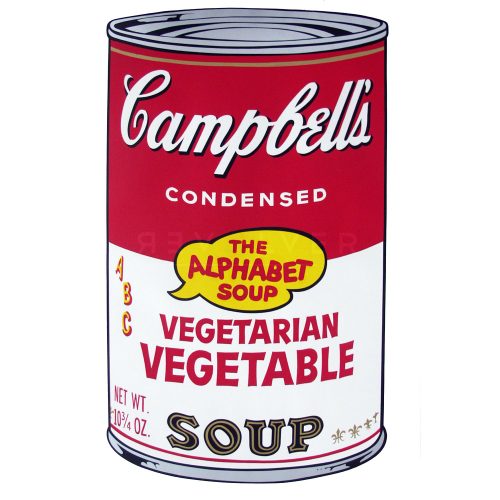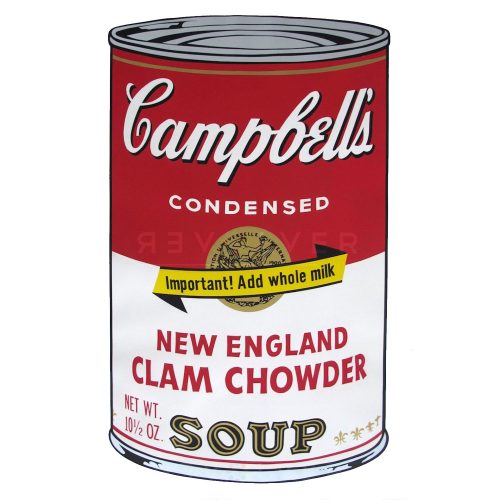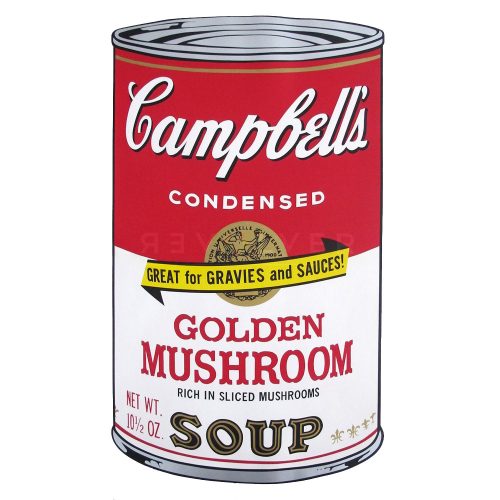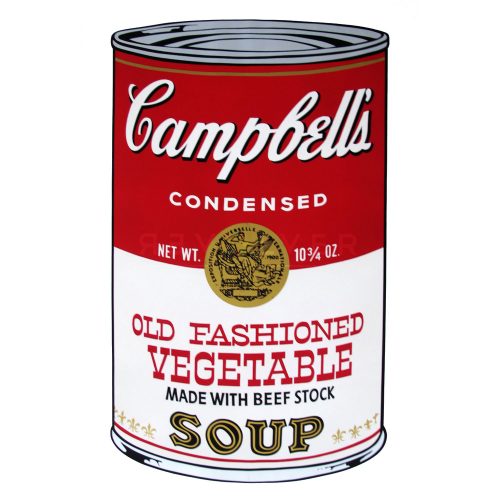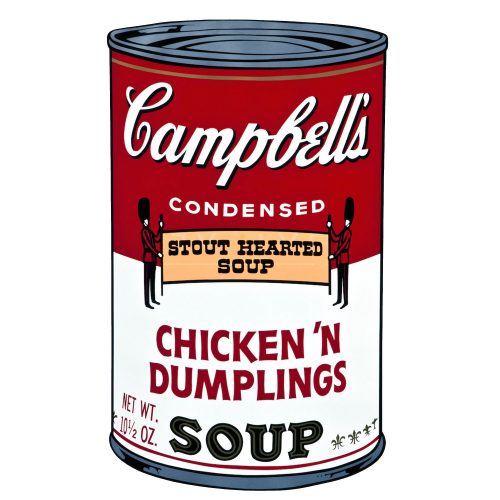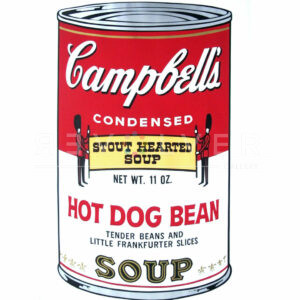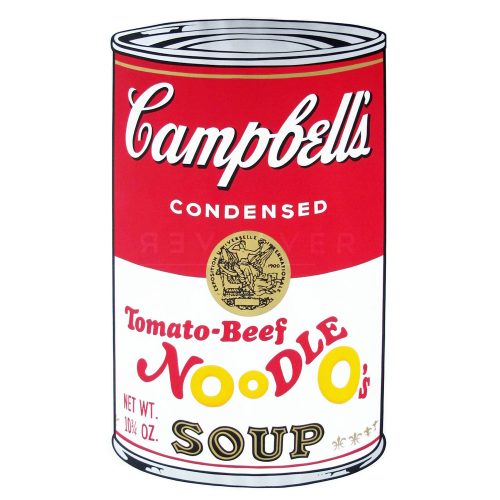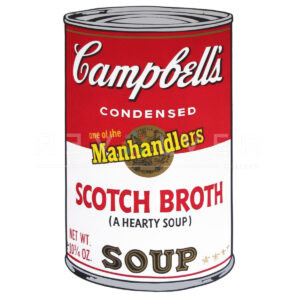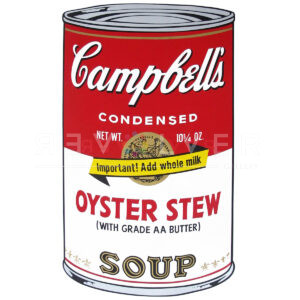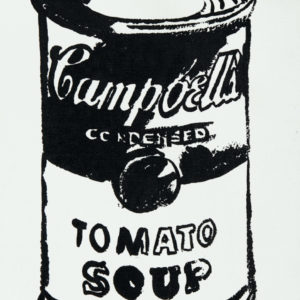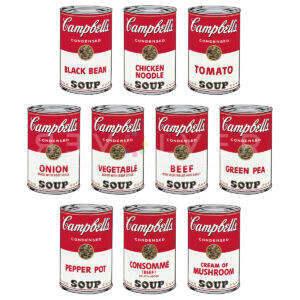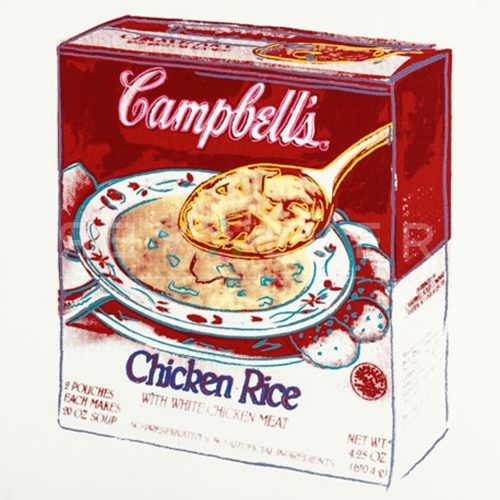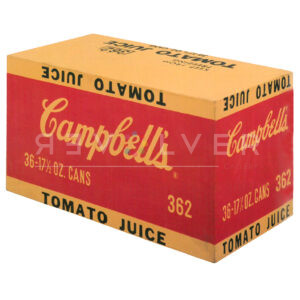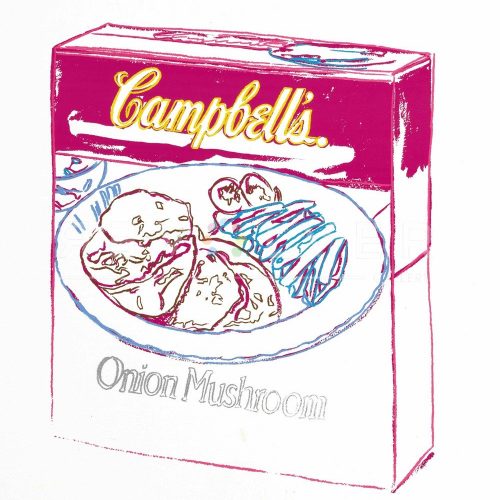The Campbell’s Soup Cans II complete portfolio by Andy Warhol comprises 10 prints of the iconic Campbell’s Soup Cans, heralding nostalgia and familiarity. As his third work rendering the common American pantry item, it follows his breakout thirty-two piece series, Campbell’s Soup Cans (1962), and the 1968 Campbell’s Soup Cans I. The Campbell’s design became high art in Warhol’s series, anchoring its name as a pop culture icon, and Warhol’s as the Prince of Pop Art.
The Campbell’s Soup Cans II screen prints show a variation of 10 different Campbell’s soup flavors. Each can rests in the center of it’s frame, where it aligns exactly with the other sets of images. This symmetry and regularity gave the entire portfolio a uniform, mass-produced aesthetic that Warhol aimed for. The cans appear graphic and animated like the labels on the actual soup cans, and share the bold shades of red, yellow, and white with black print lettering that resembles the true Campbell’s style. Warhol decided to include hyper-realistic detailing of shadows and refracting light on the tin lids, making each can slightly unique to its counterpart. The works likenesses to one another are further broken with different flavors, slogan design and colors.
The Campbell’s Soup Cans II complete portfolio expands creatively from Campbell’s Soup I with bolder, brighter colors, the addition of slogans and catch-phrases to connect viewers to the product, and more versatility with shape and directionality. Certain deviations from the original portfolio can be seen throughout the series in prints like Hot Dog Bean, Vegetarian Vegetable, and Tomato-Beef Noodle O’s. Campbell’s Soup Cans II, like the original series, was created via silkscreening. Traditionally used in advertising for it’s precise and bold graphics to grab viewer’s attention, Andy Warhol harnessed this effect with the intent of transforming advertisement into art. Warhol drew on this business-art motif of a Campbell’s Soup can, but he transformed the static, consumable function of the can into something desired outside of function and as an object worthy of artistic reflection.
Campbell’s Soup was something of convenience and routine for Andy Warhol. “I used to drink it,” he famously said. “I used to have the same lunch every day, for 20 years, I guess, the same thing over and over again.” It was ultimately the perfect image to replicate and produce on a broad scale. It’s overt simplicity and lack of self expression made for a lot of criticism. It seemed too commercial, too repeatable, to be considered high art. As apathetic Campbell’s Soup Cans II may seem though, it explores the concept that art should not have to be personal, nor must it be a deep, transcendent masterpiece. The Campbell’s Soup Cans II complete portfolio is the antithesis of expressive artistic norms. But all the while, it embraces social norms and everyday, recognizable objects.
Ultimately, the Campbell’s Soup Cans II prints and Warhol’s previous soup cans helped to redefine art. As an objective statement collection meant to turn heads and force viewers to think about how and what they consume, both food and art related, it defines an era where the conventional and the mundane could become extraordinarily powerful tools (via Pop Art).
Campbell’s Soup Cans II Complete Portfolio as Part of Andy Warhol’s Larger Body of Work
Warhol’s collection of prints representing Campbell’s soup cans is arguably his most iconic and widely recognized endeavor. The Campbell’s Soup Cans portfolios represent many themes that Warhol continued to work with throughout his career, including the powerful role that mass consumption plays in postwar society. The semi-mechanized process he used to create these works is a staple characteristic of his creative process. This series helped to usher in the Pop Art movement that endures today, renewed and rediscovered by artists such as Damien Hirst and Jeff Koons.
Photo Credits:
- Andy Warhol tracing Campbell’s Soup silkscreen, The Factory, New York City, circa 1965 © Estate of Nat Finkelstein © 2021 The Andy Warhol Foundation for the Visual Arts, Inc. / Licensed by DACS, London
- Andy Warhol and Gerard Malanga make a painting, 1964
Vintage gelatin silver print, 10¼ × 14¾ inches; 26 × 38 cm. Photo by Matthew Marks. - Andy Warhol, 1964. Vintage gelatin silver print, 10¼ × 14¾ inches; 26 × 38 cm. Photo by Matthew Marks.

